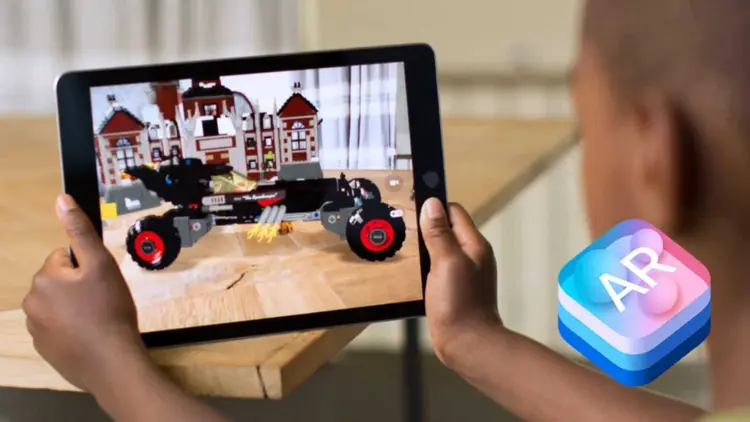How to Design a Great User Interface for Augmented Reality Applications
Augmented reality (AR) applications are gaining immense popularity among tech-savvy users. With the help of AR, developers can create immersive and interactive experiences for their users.
However, designing a great user interface for an augmented reality app is no easy task. It requires careful consideration of factors like usability, accessibility, design elements, and more to ensure a smooth user experience. In this blog post, we’ll discuss some best practices for designing an effective UI for your AR application that will keep your users engaged and delighted with every use. So let’s get started!

1. Understand the user’s needs and goals
In the realm of augmented reality applications, crafting a phenomenal user interface is of utmost importance to ensure that end users have a seamless, efficient, and enjoyable experience. To achieve this, designers must diligently analyze and understand the unique needs and goals of their target audience.
Gaining this insight typically involves conducting interviews or focus groups, observing user behavior in similar contexts, and developing user personas to define the typical demographics, attitudes, and motivations of the intended users. This research is pivotal in shaping the interface around the user’s desires, empowering designers to emphasize the most essential features and functionalities.
By prioritizing the needs and goals of the user, a highly customized and intuitive augmented reality interface can emerge, ultimately driving user satisfaction and promoting engagement with the application. This user-centered approach is a cornerstone in successful interface design and paves the way for augmented reality experiences that truly enrich the lives of those who interact with them.
2. Create a user-friendly design that is intuitive and easy to use
In this current landscape of advancing technology, augmented reality (AR) applications have created an atmosphere for exploration and engagement. To ensure the success of these apps, one must prioritize UI and UX design to create a user experience that is seamless with life as we know it.
By focusing on UI/UX principles throughout development, developers can build intuitive interfaces that are visually pleasing and effortless to navigate – truly harnessing the potential within AR tech! This means considering factors such as clarity, consistency, responsiveness, and flexibility in the design process.
Furthermore, effective UI and UX design also prioritizes user feedback and incorporates their preferences to ensure that the interface feels natural and instinctive. By combining keen insight into user needs with cutting-edge design elements, augmented reality applications can offer an immersive experience that grants users more control over their interactions with technology in creative and innovative ways.
3. Incorporate visual cues for navigation so users can easily find what they need
Incorporating visual cues for navigation within an augmented reality (AR) application is an essential aspect of designing a great user interface, as it ensures that users can easily locate the information and functionalities they require. To effectively implement visual cues, it is crucial to strike a balance between intuitive design and blending those cues within the immersive AR environment, all without disrupting the overall experience.
One effective approach is to employ familiar icons or symbols that users are already accustomed to, such as arrows or location pins, strategically placing them in key areas of the virtual space. Furthermore, leveraging color contrasts or even animated elements can aid in drawing users’ attention to these navigational cues, while still maintaining an aesthetically pleasing interface.
It’s also worth considering the use of gestures or voice commands to reveal or activate these visual cues, adding to the seamless interaction between the user and the application. By thoughtfully incorporating visual navigation aids, designers can elevate the AR experience, minimize confusion, and make the exploration of virtual spaces an engaging and rewarding venture for users.
4. Make sure the interface works well with different types of input, such as voice, touch, or gesture commands
When crafting an impressive user interface for augmented reality applications, one essential factor to consider is making certain that the interface accommodates a wide range of inputs like voice commands, tactile input, or motion control. This not only allows users with different preferences and abilities access to the application but also upgrades the overall experience by offering a more agile and interactive atmosphere.
Voice commands can be particularly advantageous for those with difficulty using touch or gesture-based controls, while touch commands provide accuracy and convenience to users looking for a more tactile experience. On top of that, integrating easy gestural interfaces can take augmented reality’s immersive qualities to new levels, enabling individuals to interact with the virtual world in an instinctive and natural way.
To ensure an optimal user experience in augmented reality applications, it is critical to find the perfect blend between input modalities. Designers should carefully evaluate and refine each interaction mode so that they work together seamlessly and offer a captivating yet fulfilling user journey. Additionally, the interface must be adapted accordingly for users to move back and forth with ease.
5. Consider how the interface will interact with physical objects in an augmented reality environment
Crafting a UI for augmented reality applications demands careful consideration of how the interface will interact with physical objects in that realm. This design choice profoundly influences not only user satisfaction but also whether virtual elements seem naturally connected to reality.
To achieve this type of realism, designers should carefully consider the actual space they’re working in and where virtual components fit into it scale-wise and placement-wise. To avoid disorientation or injury, UI elements must be designed to not obstruct or divert the user from their physical surroundings. Furthermore, realistic physics and collision detection should be integrated into the interface for an authentic experience.
Additionally, adding contextual information and environmental cues can help users navigate through the application rapidly while still remaining conscious of where they are in reality. By addressing all these factors, designers can create a more intuitive and engaging user interface that truly enhances the augmented reality experience, while maintaining the necessary balance between the virtual and real world.

6. Test your design on various devices to ensure it functions properly across platforms
As you begin testing, pay close attention to the UI elements’ size, position, and responsiveness to provide a consistent experience, regardless of whether a user is navigating on a sleek, high-end device or an older, less capable one. Furthermore, it’s essential to consider the touch fidelity and precision when interacting with the interface, as these variables may greatly impact overall user satisfaction.
Finally, remember that each device may come with its own set of sensors that could influence the AR experience, so be prepared to account for these variations and plan accordingly in your design process. In short, rigorous cross-platform testing of your AR application’s user interface will ensure flawless functionality and maximized user engagement, ultimately leading to a highly polished and well-received product.
Final Words
In conclusion, designing an intuitive and engaging user interface for augmented reality applications requires careful consideration of the physical environment, contextual information, and device capabilities.
By leveraging neuroscience principles to understand how users interact with their digital environments, designers can create interfaces that are both immersive and naturalistic. Additionally, rigorous cross-platform testing is essential in order to ensure consistent performance across devices. With these tips in mind, you should be well-equipped to craft a truly innovative AR experience that delights your customers!






